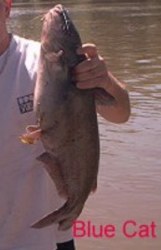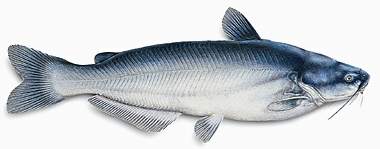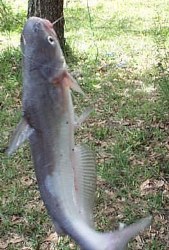| Catfishing From the Dock | home |
| Opelousas,Flat head Cats | Blue Cats Info | Channel cats info | Catfish Family Tree | Catfish Seasons | Texas Species Daily Bag Length | Cleaning Catfish |
| Blue Cats Info |



Common Names – Monickers include fulton, blue channel, humpback cat, silver cat, white cat, great blue cat, highfin blue, white fulton and forktail cat.
Description
Ictalurus is Greek meaning "fish cat," and furcatus is Latin, meaning "forked," a reference to the species' forked tail fin. Blue catfish have a forked tail, and are sometimes very similar to channel catfish. However, only the Rio Grande population has dark spots on the back and sides. The number of rays in the anal fin is typically 30-35, and coloration is usually slate blue on the back, shading to white on the belly.
Habitat - By nature, blues are big-river fish. They prefer clearer, faster water than other cats, and are usually found over a hard sand or gravel bottom. If you want to catch a heavyweight, don't waste time fishing creeks, ponds or small lakes. Blues are less likely to be found in slow, turbid waters than other catfish, but they are adaptable.
Food Habits - In many respects, the behavior of blue catfish parallels that of striped bass. Like stripers, large blues feed primarily on shad, herring and other schooling baitfish; consequently they are on the move more than other cats and are frequently found in open-water habitat. Blue cats also favor areas of heavy current, while channel cats and flatheads prefer areas with slow to moderate water flow.
Blue cats are active year-round, except when water temperature falls below 40 degrees. Most anglers fish for them during warm months, but many are learning the species' habit of gathering in large feeding schools during winter. Some schools may contain several trophy-class fish. Most hold near the deepest well-oxygenated bottom structure available.
Blue catfish also take crayfish, insects, clams and other invertebrates. Smaller fish are taken on commercial baits, such as stink-baits and chicken livers, but not as readily as channel catfish.